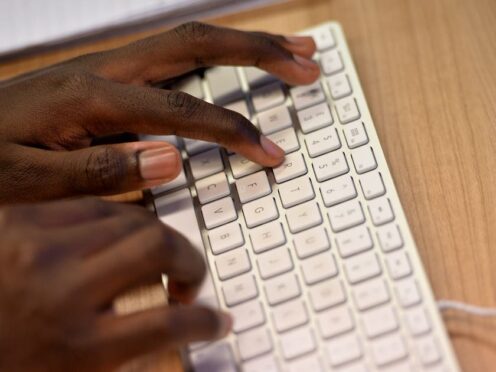
Spending a lot of leisure time on the computer may be linked to an increased risk of erectile dysfunction in men, research suggests.
A study of more than 200,000 men indicates that for every additional 1.2 hours spent using a computer, the chances of experiencing erectile dysfunction increased by 3.57 times.
The analysis, published in Andrology, also suggests these men showed a stronger genetic tendency for leisure computer use.
Long-term computer use for leisure was found to be associated with lower levels of follicle-stimulating hormone in men, which stimulates the production of sperm.
However, the researchers said there was no evidence to suggest that other sitting activities such as watching television or driving for leisure increased the risk of erectile dysfunction.
They said further research is needed to understand the association between computer use and erectile dysfunction risk.
The authors wrote: “Although the specific mechanism of erectile dysfunction caused by computer use has not been clarified in the present study, the damage of sedentary behaviour to erectile function appears to be clear, which needs to attract public attention.
“In other words, physical activity can help to prevent or improve erectile function.”
For the study, scientists from China looked at data from genome-wide association studies, where genes linked to a particular condition or trait, such as risk of sedentary behaviour, are identified.
The cohort involved men aged between 40 and 60 from the UK Biobank, an online database of medical and lifestyle records from more than half a million Britons.
Allan Pacey, professor of andrology at the University of Manchester, described it as “quite a neat but complicated study” exploring the possible contributory factors which may lead to erectile dysfunction.
He said: “We’ve known for a while that men who have a sedentary lifestyle can have a higher incidence of erectile dysfunction, but we have not been sure why.
“In this study, the authors show that long-term use of a computer in men’s leisure time was associated with an increased risk of erectile dysfunction.
“They also show that this was related to lower levels of a hormone called FSH in these men.
“Whilst FSH is an important reproductive hormone, which stimulates the production of sperm, it’s effect on erectile function is less clear and the authors of the study suggest this is a new avenue for investigation.
“Whilst this study does not absolutely show cause and effect, it certainly suggests that men who are worried about their erectile function should perhaps get off the computer and become more active.
“Studies have already shown that regular exercise can improve erectile function.
“Of course, if the problem persists, men should consult their general practitioner who will be able to offer a range of solutions to try and help.”

Enjoy the convenience of having The Sunday Post delivered as a digital ePaper straight to your smartphone, tablet or computer.
Subscribe for only £5.49 a month and enjoy all the benefits of the printed paper as a digital replica.
Subscribe